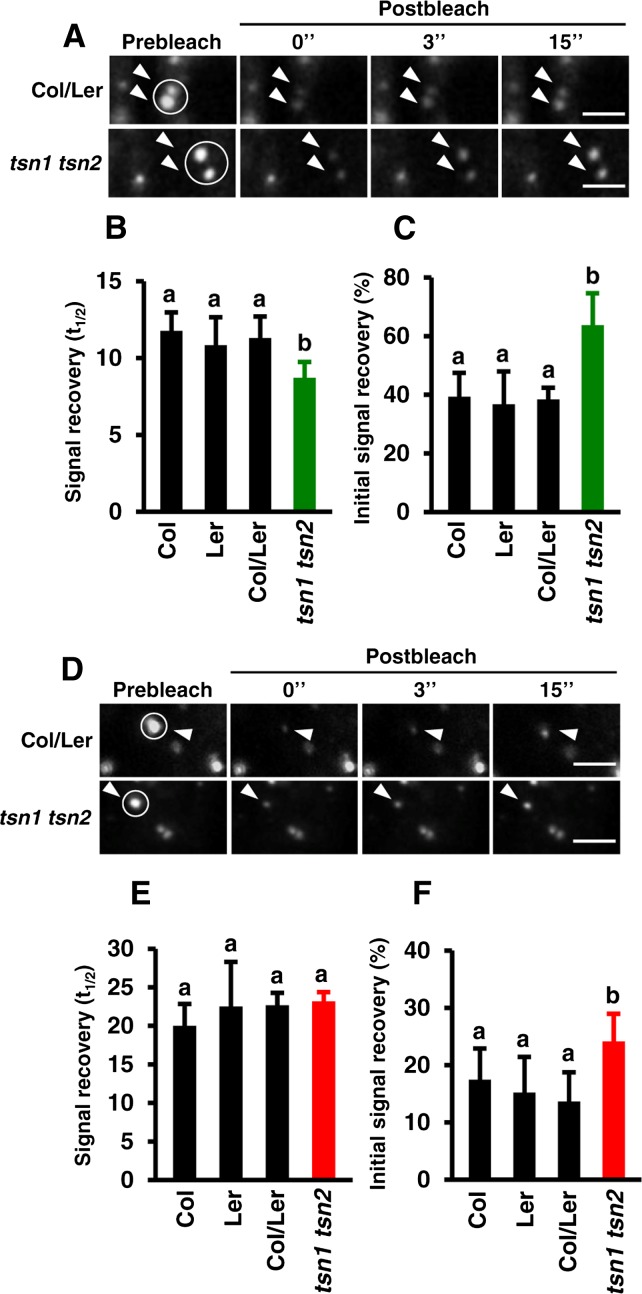Figure 6.
TSN Mediates the Association of Rbp47b and DCP1 with Cytoplasmic Foci.
(A) Selected time frames (0, 3, and 15 s after bleaching) from FRAP analysis of GFP-Rbp47b in root tip cells of tsn1 tsn2 and Col/Ler seedlings expressing Pro35S:GFP-Rbp47b after heat stress. Bars = 3 μm.
(B) and (C) Signal recovery rate (t1/2; [B]) and proportion of the initial signal recovery (%; [C]) of GFP-Rbp47b in root tip cells of wild-type (Col, Ler, and Col/Ler) and tsn1 tsn2 seedlings expressing Pro35S:GFP-Rbp47b. Green columns correspond to the mutant background (tsn1 tsn2), while black columns correspond to wild-type backgrounds.
(D) Selected time frames (0, 3, and 15 s after bleaching) from FRAP analysis of GFP-DCP1 in root tip cells of tsn1 tsn2 and Col/Ler seedlings expressing Pro35S:GFP-DCP1 after heat stress. Bars = 3 μm.
(E) and (F) Signal recovery rate (t1/2; [E]) and proportion of the initial signal recovery (%; [F]) of GFP-DCP1 in root tip cells of wild-type (Col, Ler, and Col/Ler) and tsn1 tsn2 seedlings expressing Pro35S:GFP-DCP1. Red columns correspond to the mutant background (tsn1 tsn2), while black columns correspond to wild-type backgrounds.
The seedlings were heat-stressed at 39°C for 40 min. Circles and arrowheads in (A) and (D) indicate the bleached foci. Data in (B), (C), (E), and (F) show means ± sd of triplicate experiments, each containing at least 10 seedlings. Means with different letters are significantly different at P < 0.05, Student’s t test.

